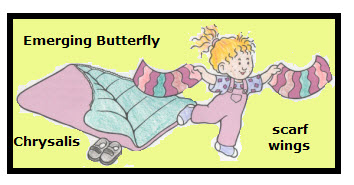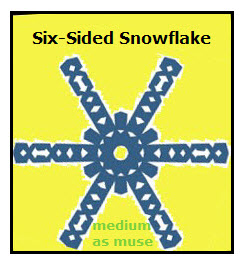Inside its chrysalis, a caterpillar breaks down into a “chemical mush.” This liquid goo is miraculously transformed into a beautiful butterfly. When this transformation is complete, a weak, wet adult butterfly breaks out of the chrysalis. In a short time the butterfly dries and is strong enough to fly away. Play and Have Fun with […]
Moon Movements
The far side of the Moon is the side that never faces Earth, and it is not always dark. In fact, a little more than half of the Moon’s surface is lit all the time. From Earth, you can only see about half of the Moon’s surface and it is always the same. So how […]
Formation of Carbon-14
Cosmic Rays From Space Question: What are cosmic rays? Answer: Fast moving particles from space: 90% high energy protons (hydrogen nuclei), 10% high energy alpha particles (helium nuclei), 1% electrons Question: How are cosmic rays involved in the formation of carbon-14? Answer: Cosmic rays bombard the nuclei of gases in earth’s atmosphere resulting in neutrons […]
How Fingerprints Differ
Fingerprints Zoology is a study about people and animals. Fingerprints are grooved patterns on the tips of the fingers. Everyone’s fingerprints are different, so they can be used for identification. Zoology Project Ideas Purpose: To discover how these variables affect fingerprint patterns: * Different fingers on the same hand. * Fingers on right and left […]
Measurements: Mass vs. Weight
I am helping a first year teacher who is teaching science to children who are not fluent in English. 1. How does one explain that mass and weight are not interchangeable terms when the same instrument, such as a bathroom scale, can be used to measure both mass and weight? 2. How does one explain […]
Types of Ultraviolet Radiation
What is the difference between UVA, UVB, and UVC? Answer: UV-A= Aging. This UV radiation can penetrate and damage the cell. About 98% of the UV radiation reaching Earth’s surface is UV-A. UV-B= Burning. This UV radiation is mainly what causes sunburns. Most of the radiation is absorbed in by the ozone layer in Earth’s […]
States of Matter: Solid
Matter exists naturally in four states. These states in order of energy from least energy to greatest energy are: Solid Liquid Gas Plasma A SOLID is the state of mater with the least amount of energy and the most structure. Solids exits in two basic forms: 1. Crystalline solids are those in which the particles […]
Snowflakes
Six-Sided Snowflake Models The snow flake to the right gives the basic design of a six-sided snowflake. You can be as creative as you dare in making snowflake models. Just be sure they have six major sides. A paper snowflake can be cut from a round paper coffee filter. The procedure for folding and cutting […]
Moon Phases
The Moon is the largest and brightest object in the night sky. It is also one of the most observed celestial body. Even so most children and adults have little knowledge about it. They know that the lighted part changes shapes and most know that it happens every month. But few know why. The Moon […]
How to Date Eggs
The older an egg is the more buoyant it is in water. Buoyancy is the ability of an object to float in a fluid (liquid or gas). For example, helium balloons are buoyant in air and boats are buoyant in water. To test the freshness of an egg, fill a bowl with water. Then place […]
- « Previous Page
- 1
- …
- 57
- 58
- 59
- 60
- 61
- …
- 96
- Next Page »







